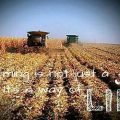PTE考生目前最大的问题之一就是练习题缺乏。除了有限的基本官方书(PLUS,Testbuilder, OG)之外,就没有题了。很多英语基础不是很扎实的同学很难找到练习材料。墨尔本文波雅思PTE培训学校专门为墨尔本,悉尼PTE考生准备了PTE练习的lecture 93篇。各位PTE同学可以练习阅读,练习记笔记技巧,可以练习复述,甚至可以练习describe image。废话少说,下面开始:
64. Before moving on to a new topic, I want to finish up our unit on arachnids by looking at what may seem a very unusual aspect of spider behavior, a species where the young spiders actually consume the body of their mother. Unlike most other spiders, this species lays one, and only one, clutch of 40 eggs in her lifetime. The young spiders hatch in mid-spring or early summer, inside a nest of eucalyptus leaves. Their mother spends the warm summer months bringing home large insects—often 10 times her weight—for meal. The catch is always significantly more than her young spiders can eat. So, the mother fattens herself up on this extra prey and stores the nutrients in her extra unfertilized eggs. As the weather turns colder, there are fewer insect prey to hunt. That’s when the nutrients stored in those extra eggs begin to seep into the mother’s bloodstream. So, when there are no more insects to feed to the young spiders, they attach themselves to the mother’s leg joints and draw nourishment by sucking the nutrient-rich blood. After several weeks, the mother is depleted of all nutrients and she dies. But then how do the young get nourishment? They start to feed on one another. Now, if you recall our discussion of Darwin, you’ll see the evolutionary value of this: Only the strongest spiders of the clutch will survive this “cannibalism,” and the mother spider will have ensured that her genes have an increased chance of survival through future generations.
【生词摘录】
1. arachnid: n. [C]蜘蛛类动物(包括蜘珠、蝎子、虱子等)
2. spider: n. [C]蜘蛛
3. species: n. [C]种类
4. consume: v. 吃
5. clutch: n. [C]一次产的或孵的蛋
6. eucalyptus: n. [C]桉树
7. catch: n. [C]捕获物
8. fatten: v. 养肥,使肥胖
9. nutrient: n. [C]营养物
10. unfertilized: adj. 未受精的
11. bloodstream: n. [C]血流
12. joint: n. [C]接合处
13. nourishment: n. [C]食物,营养品
14. cannibalism: n. [C]嗜食同类,自相残杀





